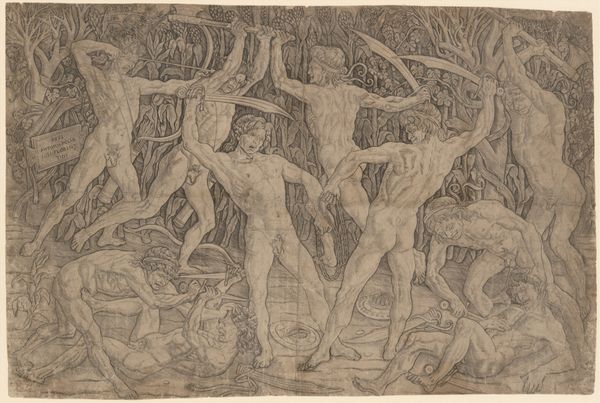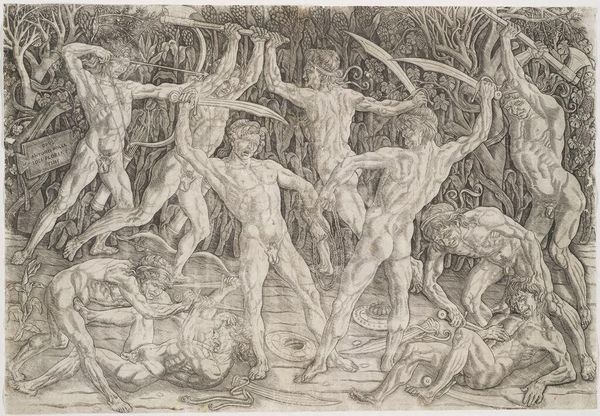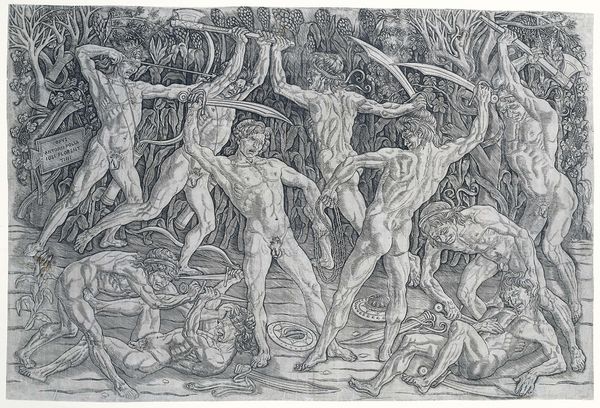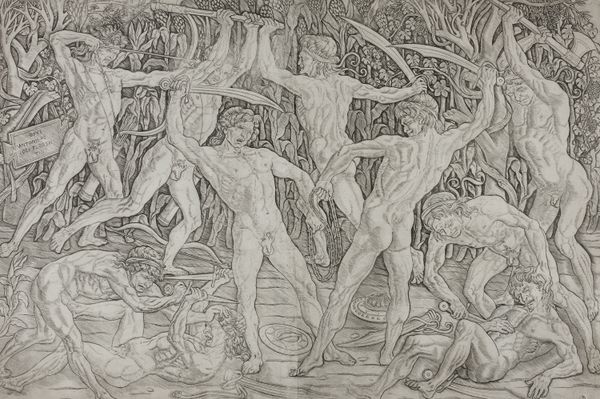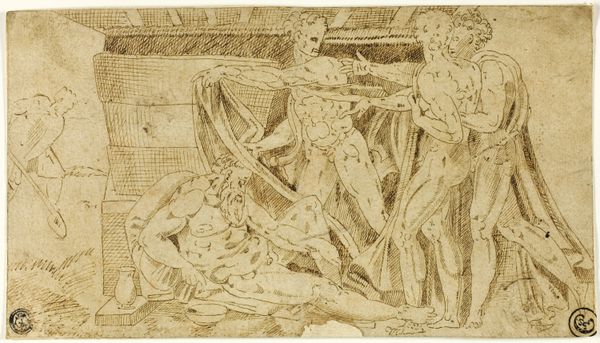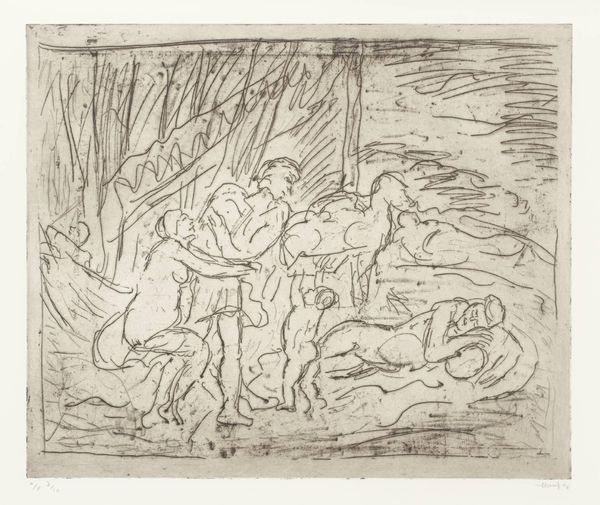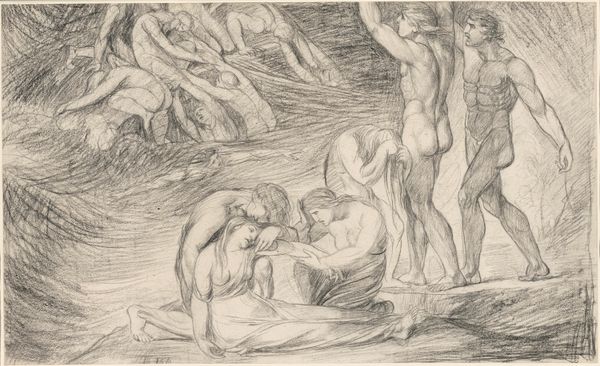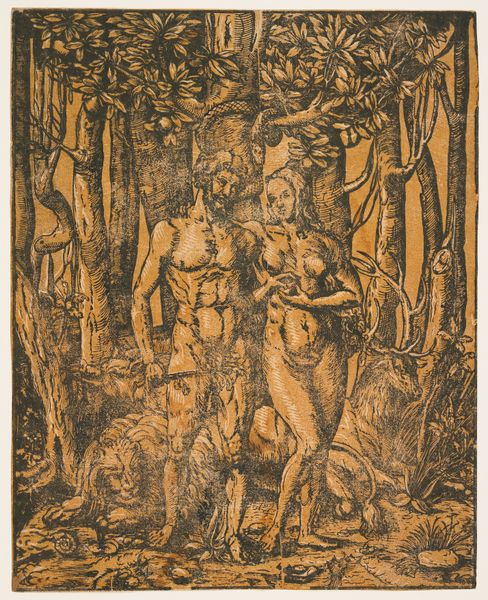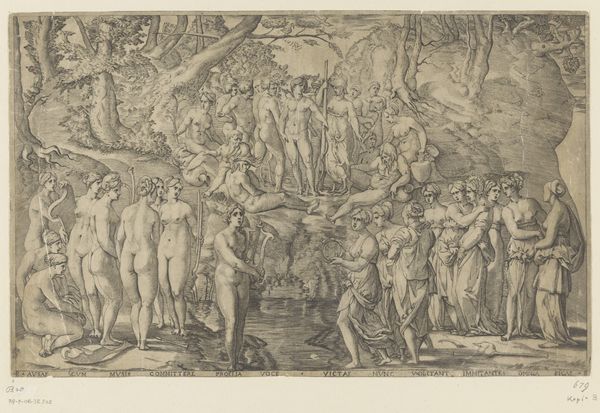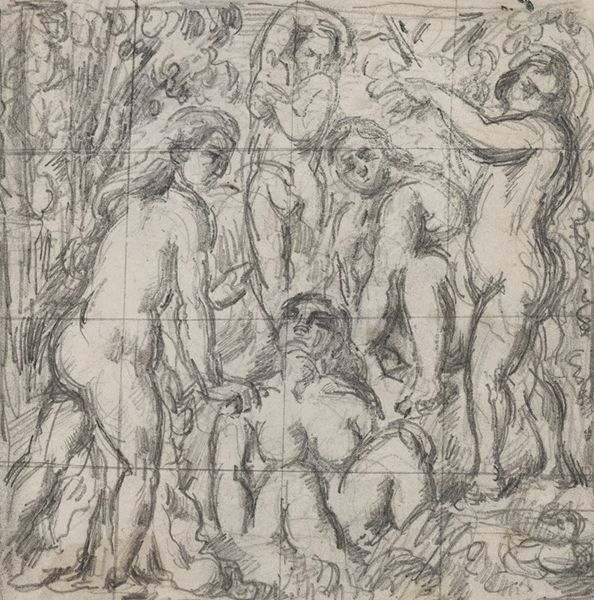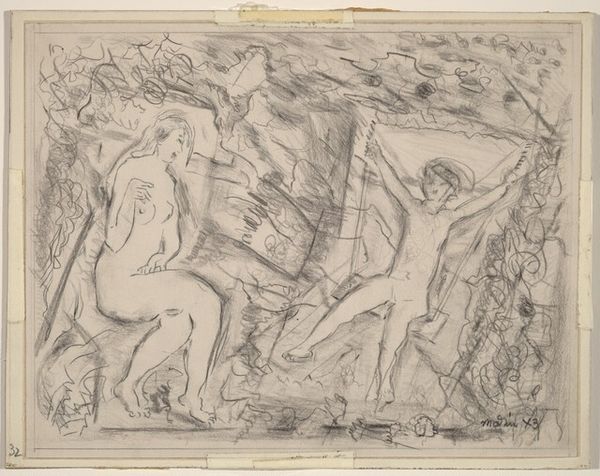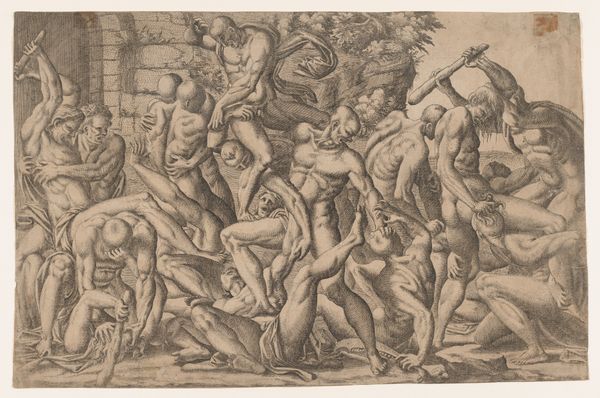
drawing, print, ink, pen, engraving
#
drawing
#
ink drawing
#
pen drawing
# print
#
pen sketch
#
figuration
#
form
#
ink
#
line
#
pen
#
genre-painting
#
history-painting
#
italian-renaissance
#
nude
#
engraving
Dimensions: 15 5/8 x 22 1/2 in. (39.7 x 57.1 cm) (image)
Copyright: Public Domain
Editor: So, here we have Antonio Pollaiuolo’s "Battle of the Nudes," created around 1470. It’s a pen and ink engraving, and it's currently at the Minneapolis Institute of Art. What strikes me most is the sheer intensity of the scene, and the somewhat performative, theatrical nature of the figures' poses. How would you interpret this work? Curator: This print reflects the burgeoning interest in classical antiquity during the Renaissance. Think about where Pollaiuolo was working - Florence, a city-state vying for power and influence. What we see here isn’t necessarily about one historical battle, but about power, physical prowess, and ultimately, civic virtue presented as a spectacle. Consider also the medium: engravings allowed for wider distribution of such images. Editor: So, the print itself plays a role in spreading this message of power and virtue? It's like propaganda avant la lettre? Curator: Precisely. This wasn’t just art for art’s sake; it was deeply embedded in the socio-political fabric of its time. Look at the inscription. Who do you think he made this for, and how did the artist try to gain visibility? Editor: It seems he was not hiding at all; it says in capital letters "OPUS ANTONII POLLAIOLI FLORENTINI". So that's an interesting element: the branding is almost as prominent as the nudes in battle, aiming directly for an audience... perhaps wealthy patrons? Curator: Yes, exactly! The print’s relatively wide availability also provided an opportunity for artists to become known to a broader audience of collectors, intellectuals, and other artists. It facilitated not only economic stability for the artist, but also elevated his status. Editor: That's fascinating. It makes you think about the work as not just an image, but also a calculated statement about the artist's own ambitions within Florentine society. Thanks! I will think about that every time I see it! Curator: My pleasure! Hopefully, this opens up some interesting angles to view art's role and reach across time.
Comments
minneapolisinstituteofart almost 2 years ago
⋮
Set against a dense backdrop of millet plants and trees, ten nude men are in the heat of the battle, with the most violent, merciless weapons—axes, swords, arrows, chain—which appear to exalt the courageous exposure of their unshielded skin and bare muscles. Bloodshed is inevitable in this battle. The image is conceived as a relief from an antique sarcophagus, transposed in a two-dimensional medium. Also the signature in Latin on a tablet signals the artist’s overt competition with the art of Antiquity. Antonio Pollaiuolo, one of the most celebrated artists of late-15th century Florence, laid down his challenge in this work of remarkable sophistication and perfection. Working in the relatively new medium of copper plate engraving, he created the work for a cultivated audience that could appreciate the technical novelty, as well as the artist’s command of the great issues of Renaissance visual art: perspective, representation of the human body and its perfection, and illusionism. The obscurity of the subject—which still engages scholars in a variety of explanations, spanning from politics to theology, from neo-platonic philosophy to allegory or mythology—seems conceived for the sake of its multiple readings and interpretations, which place the visual arts in the realm of hermetic poetry.
Join the conversation
Join millions of artists and users on Artera today and experience the ultimate creative platform.
